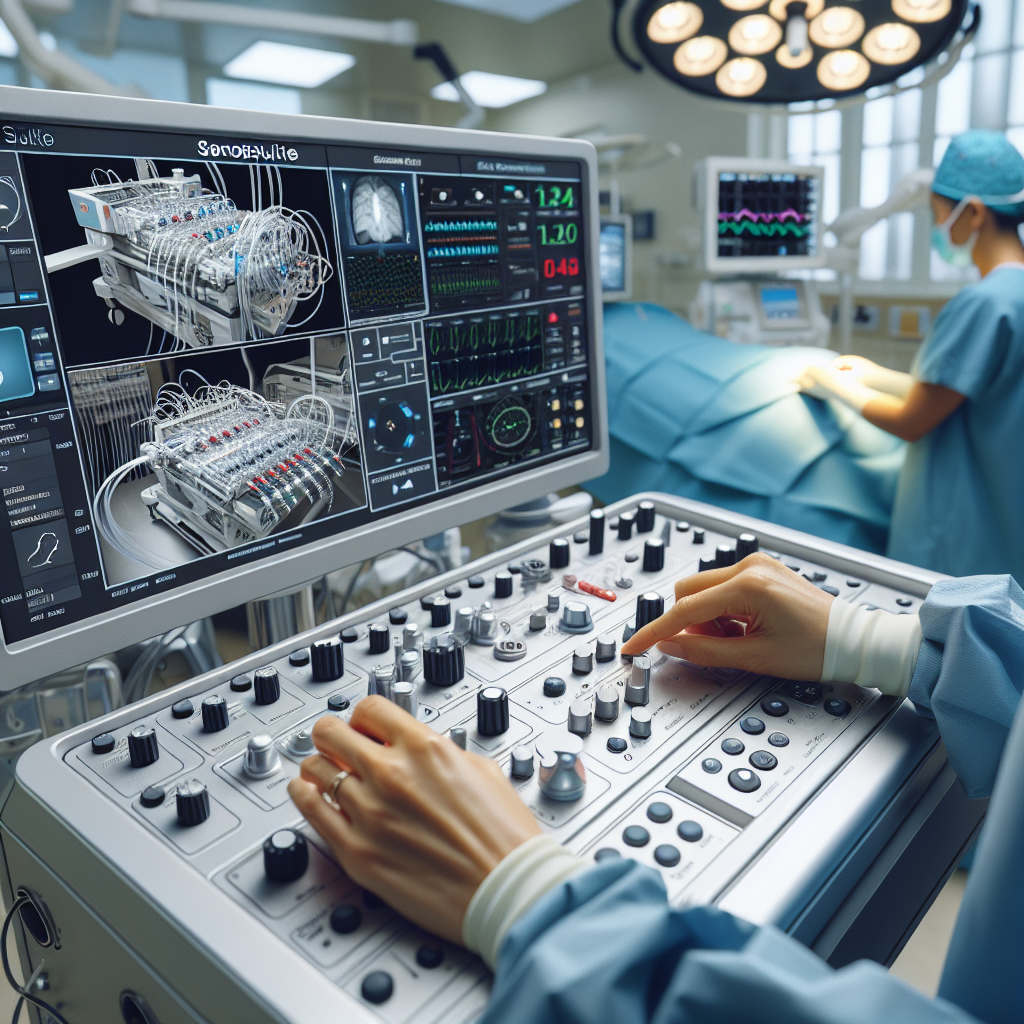SomnoSuite Anesthesia Delivery System: The Ultimate Technical Guide5 min read

Ensuring safe and efficient anesthesia delivery is critical for successful surgical procedures. The SomnoSuite Anesthesia Delivery System offers a comprehensive solution for precise anesthetic gas delivery, ventilation control, and seamless integration with existing equipment. This ultimate technical guide provides an in-depth overview of the SomnoSuite system components, setup requirements, maintenance procedures, and integration capabilities to help anesthesiologists and surgical teams optimize their anesthesia workflows.
Key Components of the SomnoSuite Anesthesia Delivery System
The SomnoSuite system consists of several essential components that work together to deliver precise anesthesia control and monitoring. Understanding each component’s role and specifications is crucial for proper system setup and operation.
Anesthesia Vaporizers
SomnoSuite features advanced anesthesia vaporizers designed for accurate and stable delivery of inhalational anesthetics. The vaporizers utilize flow-over technology to ensure consistent output across a wide range of flow rates and temperatures. Key specifications include:
- Compatible with commonly used anesthetic agents (sevoflurane, desflurane, isoflurane)
- Flow rate range: 0.2 to 15 L/min
- Output concentration range: 0 to 8% (sevoflurane), 0 to 18% (desflurane), 0 to 5% (isoflurane)
- Temperature compensation range: 10°C to 40°C
Ventilation Unit
The SomnoSuite ventilation unit provides precise control over patient ventilation parameters. It supports various ventilation modes, including volume-controlled, pressure-controlled, and synchronized intermittent mandatory ventilation (SIMV). Notable features and specifications include:
- Tidal volume range: 20 to 1500 mL
- Respiratory rate range: 4 to 100 breaths/min
- Inspiratory pressure range: 5 to 60 cmH2O
- Integrated spirometry for real-time monitoring of ventilation parameters
- Leak compensation and automatic compliance adjustment
Gas Delivery System
The gas delivery system in SomnoSuite ensures accurate mixing and delivery of medical gases (oxygen, air, nitrous oxide) to the patient circuit. It incorporates advanced flow sensors and pressure regulators for precise control. Key specifications include:
- Oxygen and air flow rate range: 0.1 to 15 L/min
- Nitrous oxide flow rate range: 0.1 to 10 L/min
- Electronic flow control with automatic compensation
- Integrated oxygen analyzer for continuous FiO2 monitoring
System Setup and Integration
Proper setup and integration of the SomnoSuite system are essential for optimal performance and patient safety. This section covers the key steps and considerations for setting up the system and integrating it with existing equipment.
Mounting and Positioning
The SomnoSuite system should be securely mounted on a stable anesthesia machine or cart. Ensure adequate clearance for hoses, cables, and ventilation connections. Position the display and controls for easy access and visibility during procedures.
Gas Supply Connections
Connect the appropriate medical gas supply lines (oxygen, air, nitrous oxide) to the SomnoSuite gas inlets using the provided hoses and fittings. Verify proper connection and perform a leak test before use. Ensure that the gas supply pressures meet the system requirements:
- Oxygen: 280 to 600 kPa (40 to 87 psi)
- Air: 280 to 600 kPa (40 to 87 psi)
- Nitrous oxide: 280 to 600 kPa (40 to 87 psi)
Vaporizer Installation
Install the compatible anesthetic vaporizers onto the SomnoSuite backbar following the manufacturer’s instructions. Ensure secure mounting and proper alignment of the vaporizer outlets with the backbar ports. Perform a vaporizer leak test and calibration check before clinical use.
Patient Circuit Setup
Assemble the patient circuit according to the system manual, including the inspiratory and expiratory limbs, Y-piece, and patient interface (mask or endotracheal tube). Connect the circuit to the ventilation unit and perform a circuit leak test. Verify proper functioning of valves, filters, and heating elements.
Monitor Integration
Integrate the SomnoSuite system with compatible patient monitors for comprehensive vital sign monitoring. Connect the monitor cables to the designated ports on the SomnoSuite and configure the monitor settings as needed. Verify data transmission and alarm settings before clinical use.
System Maintenance and Troubleshooting
Regular maintenance and prompt troubleshooting are crucial for ensuring the reliable operation of the SomnoSuite Anesthesia Delivery System. This section covers essential maintenance tasks and common troubleshooting scenarios.
Preventive Maintenance
Perform scheduled preventive maintenance according to the manufacturer’s recommendations, including:
- Cleaning and disinfection of system components
- Replacement of filters, hoses, and disposable elements
- Calibration checks for vaporizers, flow sensors, and pressure transducers
- Software updates and system diagnostics
Maintain a maintenance log to track service history and ensure timely completion of tasks.
Troubleshooting Common Issues
In case of system alarms or unexpected behavior, refer to the SomnoSuite troubleshooting guide for step-by-step resolution procedures. Some common issues and their potential solutions include:
- Vaporizer output deviation: Check for leaks, perform calibration, and replace the vaporizer if necessary.
- Ventilator alarms (high pressure, low tidal volume): Check for circuit leaks, adjust settings, and verify patient condition.
- Gas supply issues: Verify gas supply pressures, check for leaks, and replace gas hoses if damaged.
- Monitor communication errors: Check cable connections, restart the monitor, and update software if required.
If the issue persists after initial troubleshooting, contact the manufacturer’s technical support for further assistance.
Frequently Asked Questions
Can the SomnoSuite system be used with different patient populations?
Yes, the SomnoSuite Anesthesia Delivery System is designed to accommodate a wide range of patient populations, from pediatric to adult patients. The system’s ventilation unit offers adjustable parameters to meet the specific needs of each patient, ensuring optimal ventilation and anesthesia delivery.
How does the SomnoSuite system ensure accurate anesthetic agent delivery?
The SomnoSuite system incorporates advanced flow-over vaporizer technology that provides precise and stable anesthetic agent delivery. The vaporizers are designed to maintain consistent output across a wide range of flow rates and temperatures, ensuring accurate and reliable anesthesia delivery throughout the procedure.
What safety features are built into the SomnoSuite system?
The SomnoSuite Anesthesia Delivery System includes multiple safety features to protect patients and ensure reliable operation. These features include integrated alarms for gas supply, ventilation, and vaporizer issues; automatic leak compensation; and continuous monitoring of vital parameters. The system also incorporates fail-safe mechanisms to prevent the delivery of hypoxic gas mixtures and to maintain patient ventilation in case of power failure.
Can the SomnoSuite system integrate with existing anesthesia equipment?
Yes, the SomnoSuite system is designed to seamlessly integrate with a variety of existing anesthesia equipment, including patient monitors, gas analyzers, and information management systems. The system provides standard connectors and communication protocols to facilitate integration and data exchange with compatible devices.
Conclusion
The SomnoSuite Anesthesia Delivery System offers a comprehensive and reliable solution for anesthesia delivery and patient ventilation. With its advanced components, precise control capabilities, and extensive integration options, the SomnoSuite system empowers anesthesiologists and surgical teams to provide safe and efficient anesthesia care.
By understanding the technical specifications, setup requirements, and maintenance procedures outlined in this guide, users can optimize the performance of the SomnoSuite system and ensure its longevity. Embracing the features and capabilities of this innovative anesthesia delivery system can significantly enhance patient outcomes and streamline surgical workflows.
